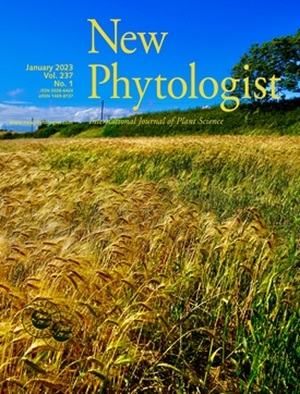花瓣形态的演化:微尺度下开花花的多样性。
IF 8.3
1区 生物学
Q1 PLANT SCIENCES
引用次数: 0
摘要
被子植物的花种类繁多。虽然大多数花的变化是肉眼可见的,但这种多样性超出了宏观尺度:花器官由一系列未被充分认识的细胞类型组成,这些细胞类型在它们的表面上产生了大量的图案,并产生了新的结构。由于不同的细胞模式提供了对生物和非生物因素的适应,它们也有助于被子植物的进化和物种形成。然而,这种多样性是如何产生的仍有待了解。本文以构成花冠的花瓣为研究对象,在细胞水平上探讨了花表面形成的机制。我们总结了目前的研究,旨在了解在花瓣发育过程中如何以高空间分辨率实现细胞命运规范和受控细胞生长(增殖和扩增)。我们还研究了这些模式的适应潜力,以及它们如何促进植物适应性和多样化。最后,我们讨论了在微观尺度上花瓣图案演变的未来研究的有希望的方向,并确定了技术进步现在可能解决的悬而未决的问题。本文章由计算机程序翻译,如有差异,请以英文原文为准。
Evolution of petal patterning: blooming floral diversity at the microscale.
The flowers of angiosperms are extraordinarily diverse. While most floral variation is visible to the naked eye, this diversity goes beyond the macroscale: Floral organs comprise an underappreciated range of cell types that generate a multitude of patterns across their surfaces and give rise to novel structures. Because diverse cell patterns provide adaptations to biotic and abiotic factors, they also contribute to angiosperm evolution and speciation. Yet, how such diversity originates remains to be understood. In this review, we focus on petals, which together form the corolla, to examine the mechanisms patterning floral surfaces at the cellular level. We summarize current research aiming to understand how cell fate specification and controlled cell growth (proliferation and expansion) are achieved with high spatial resolution during petal development. We also examine the adaptive potential for such patterns and how they contribute to plant fitness and diversification. Finally, we discuss promising directions for future research on the evolution of petal patterning at the microscale and identify outstanding questions that technological advances now make it possible to address.
求助全文
通过发布文献求助,成功后即可免费获取论文全文。
去求助
来源期刊

New Phytologist
生物-植物科学
自引率
5.30%
发文量
728
期刊介绍:
New Phytologist is an international electronic journal published 24 times a year. It is owned by the New Phytologist Foundation, a non-profit-making charitable organization dedicated to promoting plant science. The journal publishes excellent, novel, rigorous, and timely research and scholarship in plant science and its applications. The articles cover topics in five sections: Physiology & Development, Environment, Interaction, Evolution, and Transformative Plant Biotechnology. These sections encompass intracellular processes, global environmental change, and encourage cross-disciplinary approaches. The journal recognizes the use of techniques from molecular and cell biology, functional genomics, modeling, and system-based approaches in plant science. Abstracting and Indexing Information for New Phytologist includes Academic Search, AgBiotech News & Information, Agroforestry Abstracts, Biochemistry & Biophysics Citation Index, Botanical Pesticides, CAB Abstracts®, Environment Index, Global Health, and Plant Breeding Abstracts, and others.
 求助内容:
求助内容: 应助结果提醒方式:
应助结果提醒方式:


